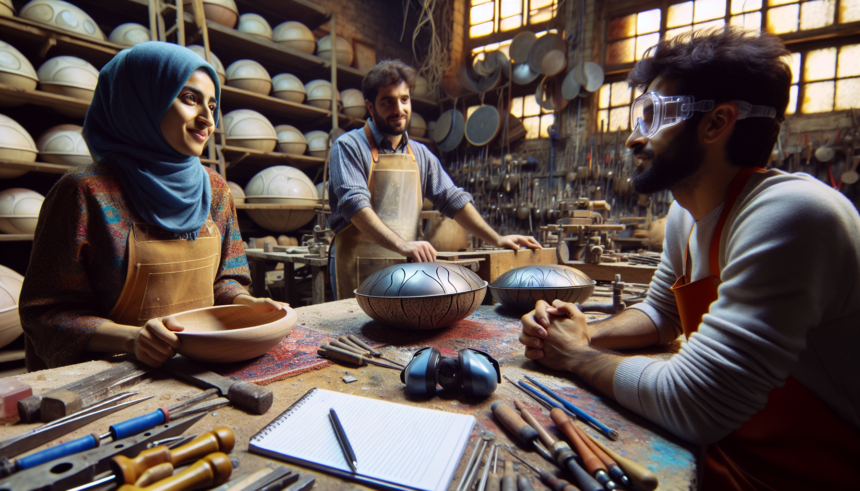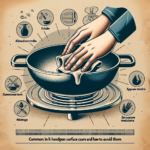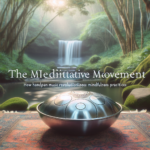<!DOCTYPE html>
<html lang="en">
<head>
<meta charset="UTF-8">
<meta name="viewport" content="width=device-width, initial-scale=1.0">
<title>Interview with the Makers: Inside Ayasa Instruments’ Handpan Workshop</title>
<style>
body {
font-family: Arial, sans-serif;
line-height: 1.6;
margin: 0;
padding: 20px;
background-color: #f4f4f4;
}
h2 {
color: #2c3e50;
}
p {
color: #34495e;
}
.faq {
margin-top: 40px;
}
.faq h3 {
color: #e74c3c;
}
</style>
</head>
<body>
<h2>An Exclusive Interview with Ayasa Instruments’ Founders</h2>
<p>In a serene corner of Northern India, nestled amidst a lush landscape, lies Ayasa Instruments’ renowned handpan workshop. This artisan establishment is home to a remarkable story of dedication, craftsmanship, and the harmonious sound of handpans. In this exclusive interview, we sit down with the founders, Rahul Sharma and Priya Mehta, who give us a glimpse inside their world of music, metal, and meticulous handcrafting.</p>
<p>The handpan, a relatively new musical instrument, has found its niche with musicians around the world. With its ethereal and resonant tones, it captivates both player and listener alike. Ayasa Instruments has quickly emerged as a leading brand in handpan manufacturing, known for its quality and innovation.</p>
<h2>The Genesis of Ayasa Instruments</h2>
<p>Ayasa Instruments started as a dream shared between Rahul and Priya, who both had a deep appreciation for world music and artisan craftsmanship. “We first encountered the handpan on a backpacking trip in Europe,” explains Priya. “Its sound was unlike anything we’d heard before—calming, enchanting, and completely immersive.”</p>
<p>Rahul adds, “What intrigued us even more was the way each handpan is individually crafted. We wanted to bring that level of artistry to India, blending our cultural heritage with this modern instrument.” The duo embarked on a journey to learn from established makers worldwide, studying the intricate process of handpan creation.</p>
<h2>Crafting a Handpan: A Symphony of Technique and Passion</h2>
<p>The making of a handpan is both art and science, requiring a deep understanding of acoustics and metallurgy. Each handpan from Ayasa Instruments is handcrafted, taking several weeks to complete. Beginning with a stainless steel sheet, the process involves shaping, tuning, and assembling with painstaking precision.</p>
<p>“The shaping phase is critical,” says Rahul as he guides us through the workshop. “It’s where we define the contours that influence the instrument’s sound.” Watching the artisans in action, one observes a rhythmic mix of hammer strikes and careful adjustments, all performed with an acute sense of timing and skill.</p>
<p>After shaping, the tuning phase requires a refined ear. Priya highlights that, “Every instrument has its own character and personality. Tuning is an iterative process of adjustment, requiring hours of listening and refining. We often say that the instrument tells us when it’s ready.”</p>
<h2>Innovations and Inspirations</h2>
<p>While the foundational technique remains traditional, Ayasa Instruments constantly experiments with new designs and materials to enhance their handpans. They’ve introduced innovations such as hybrid sound models and durable, eco-friendly materials.</p>
<p>“Innovation is key to our philosophy,” Priya shares. “We draw inspiration from natural shapes, classical Indian motifs, and global music genres. This allows us to create instruments that resonate with diverse audiences while maintaining traditional roots.”</p>
<h2>The Workshop Environment: A Space of Creativity and Collaboration</h2>
<p>The Ayasa workshop is more than just a production facility; it's a vibrant community space. Artisans work side-by-side, exchanging techniques and ideas. The walls are adorned with musical heritage artifacts, inspiring a blend of past and present.</p>
<p>“Our workshop thrives on collaborative spirit,” says Rahul. “Each artisan contributes their unique touch, turning every handpan into a collaborative masterpiece. This environment fosters not just skill development but also creative expression.”</p>
<h2>Cultural Impact and Global Reach</h2>
<p>Ayasa Instruments has not only captivated Indian musicians but has also built a steady international clientele. Their handpans have found homes with artists worldwide, from Europe to the Americas, and Asia to Australia. “It’s fulfilling to see our handpans in the hands of musicians who bring joy and healing to others,” Priya notes.</p>
<p>The brand also incorporates social responsibility into its ethos, supporting local communities through music education programs and sustainable sourcing practices. Rahul elaborates, “We want to ensure that the music that touches souls also benefits our community. It’s a holistic approach to art-making.”</p>
<h2>Future Visions</h2>
<p>Looking ahead, Ayasa Instruments aims to expand its workshop and explore further innovations in handpan making. The founders are excited about the future, as they continue to refine their craft and inspire the next generation of musicians.</p>
<p>“Our vision is to create instruments that not only produce exceptional sound but also serve as artistic representations of diverse cultures,” says Priya. “In doing so, we aim to bridge gaps and bring people together through music.”</p>
<p>Rahul adds, “Handpans are still evolving, and there’s so much more to explore. We’re eager to contribute to this evolution and see how far we can push the boundaries.”</p>
<h2>Conclusion</h2>
<p>The journey of Ayasa Instruments exemplifies the marriage of tradition and innovation in music craftsmanship. Through dedication to quality and a love for global music culture, Rahul and Priya have created a brand that resonates worldwide. Their handpans are not just instruments; they are gateways to a world of sound and emotion, crafted with care and meant to inspire. As Ayasa Instruments continues to grow, their commitment to excellence and cultural integration remains a guiding principle, enriching the global music tapestry one note at a time.</p>
<div class="faq">
<h3>Frequently Asked Questions</h3>
<h4>1. What is a handpan?</h4>
<p>A handpan is a musical instrument made from metal, characterized by its concave shape and array of notes arranged in a circle. It produces a resonant and melodic sound, often used for meditative and therapeutic purposes.</p>
<h4>2. How long does it take to make a handpan at Ayasa Instruments?</h4>
<p>The process of crafting a single handpan can take several weeks. This includes initial shaping, tuning, and a period of refinement to achieve the desired sound quality.</p>
<h4>3. What makes Ayasa Instruments’ handpans unique?</h4>
<p>Ayasa Instruments are known for their high-quality craftsmanship, innovative designs, and use of eco-friendly materials. Their instruments combine traditional techniques with modern advancements to create a distinctive sound.</p>
<h4>4. Can I visit the Ayasa Instruments workshop?</h4>
<p>While the workshop is primarily a production facility, Ayasa Instruments occasionally offers tours and workshops for those interested in learning more about the handpan crafting process. It is advisable to contact them directly to inquire about availability.</p>
<h4>5. How can I purchase a handpan from Ayasa Instruments?</h4>
<p>Handpans can be purchased directly from Ayasa Instruments through their website or authorized distributors. Customizations and special requests can be discussed by contacting them directly.</p>
</div>
</body>
</html>Interview with the Makers: Inside Ayasa Instruments’ Handpan Workshop

Leave a comment




